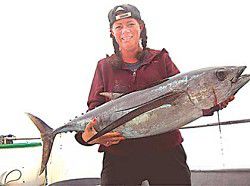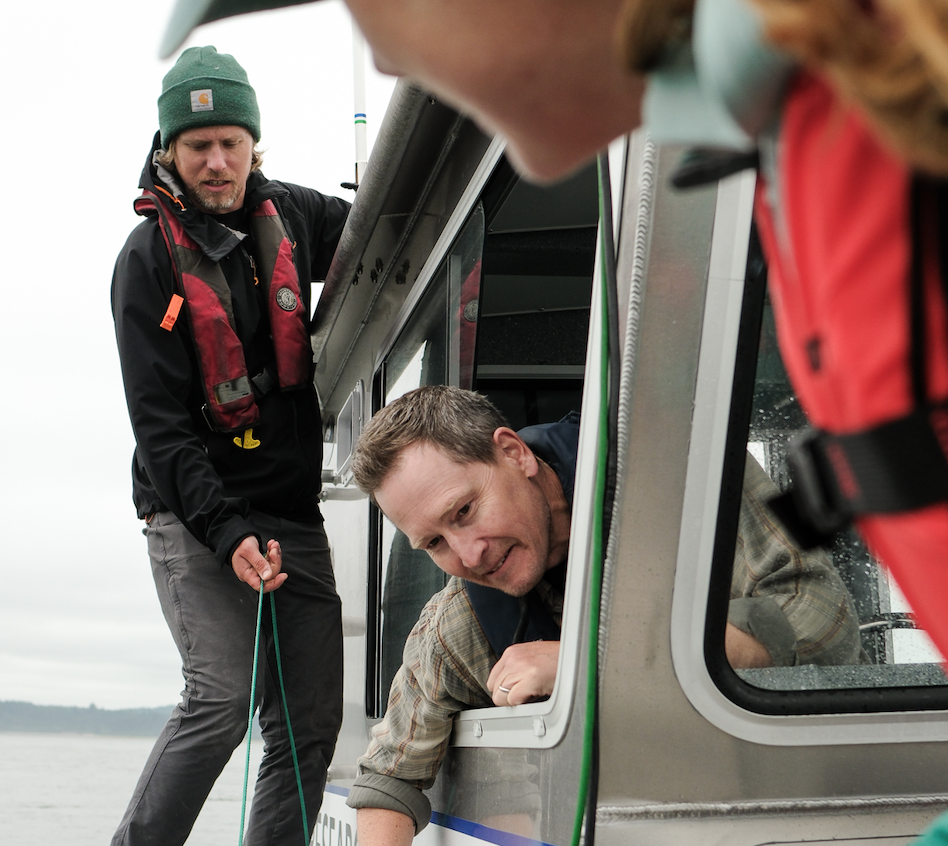Fish & Feathers: Striped marlin, yellowtail tuna hooked off Washington coast!
Published 5:00 pm Tuesday, September 25, 2007

- <I>RON MALAST photo</I><BR>This 40.5 pound albacore is the second largest taken out of Westport this season, the largest being 43 pounds.
To conclude last week’s article of a long-range tuna-fishing trip off the Washington coast, let’s pick up the following morning on the Ranger, captained by Don Davenport with myself as the alternate.
Trending
About 5:45 a.m., at about 125° 31′ 01″ West and 46° 23′ 45″ North, Don is first on deck and tosses a hooked live anchovy over the side and wham! – fish on. The yell, wakes the rest of the crew and many half dressed, grab their rods and pitch anchovies into the ocean. As early dawn lightens the scene, albacore can be seen swimming all around the boat. Six and seven fish are hooked up at the same time as the two deckhands work feverishly to boat fish, repair lost leaders, throw bait and get poles back in the water – what a madhouse.
Fishermen sit on the benches exhausted as the bite wears down; the decks are littered with the bodies of 42 albacore, taken at one stop, without moving the boat. What a wake-up call. After breakfast and bleeding and icing the fish, we start trolling feathers and jigs, looking for signs of another school of fish. We catch one here and one there when suddenly, while dragging lines close to a large raft of kelp, the port rod goes off and we mistakenly believe that we have hooked the kelp. But no, the line keeps screaming off the reel and as the fish is fought closer to the boat we hear cries of what is it?
Well, it turned out to be a yellowtail. The name comes from the forked tail that is dark yellow in color and has a wide yellow stripe along each side that diminishes as it reaches the tail. This fish generally does not show up off the Washington coast but boats fishing out of Westport have caught several this season, in the smaller size range. Yellowtail can get up in the 200-pound range.
Trending
Striped marlinOn the next trip out on the Ranger, an equally bizarre catch was recorded. Just after coming off a bait stop, the captain throttled up to chase another boil of fish and did not realize that the deckhands had set out the trolling rods; he was doing about 10 knots. Fish on! The cry goes out, as the rod on the port side is smoking, and line comes off the reel. As the boat settles down, the line screams out at a 90-degree angle for about 75 yards, and all anglers turn their attention to the fish, knowing that this is unique behavior for an albacore.
The fish bursts out of the water and does a tail dance on the surface, before plunging back into the ocean and breaking the line. It is the easiest of the marlin to recognize – the striped marlin. It is easy to recognize because of the pronounced lavender vertical stripes along the length of its body.
The fish by all estimates is 125 to 140 pounds and is generally found in Mexican and Southern California waters and rarely found in waters further north of the southern Oregon Coast. The temperature range of the striped marlin is 70 to 86 degrees; we were fishing in 84-degree water. Also caught on the previous trip was an albacore weighing in at 40.5 pounds, the second largest tuna caught out of Westport this season.
And so, a very interesting season of fishing winds down in the Northwest.
Ron Malast is skipper of the charter boat Big Dipper operating out of Sea Sport Fishing Charters in Ilwaco.









